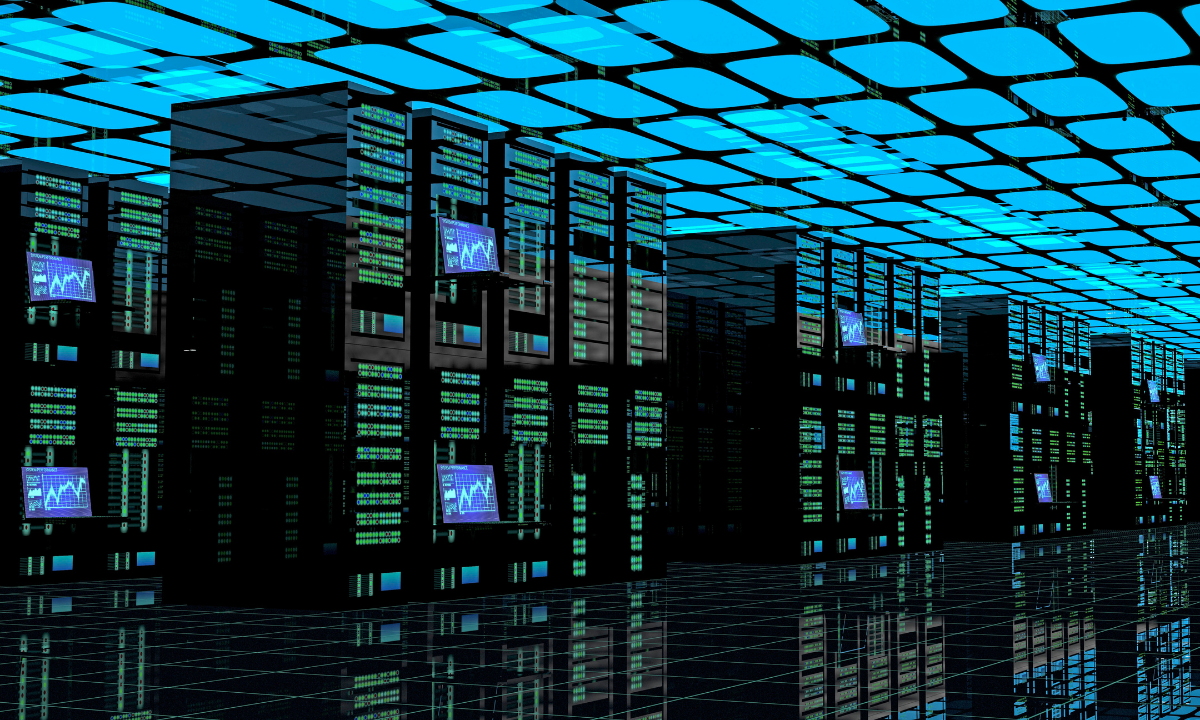How Long Does It Take?
The timeline to design and build a data center varies widely based on size, complexity, location, and purpose (e.g., enterprise, hyperscale, edge). On average:
- Small to Medium Enterprise Data Centers (1–5 MW): 12–18 months from planning to commissioning.
- Large Enterprise or Hyperscale Facilities (10–50+ MW): 18–36 months, with modular designs shaving off time.
- Edge/Micro Data Centers (<1 MW): 6–12 months, leveraging pre-fabricated units.
These timelines include planning, design, permitting, construction, and commissioning. Delays—common due to supply chain issues or regulatory hurdles—can extend this by 3–12 months. Conversely, innovations like pre-fabrication and streamlined permitting can compress schedules to as little as 9 months for smaller builds.
Steps to Design and Build a Data Center
Building a data center is a multi-phase process requiring coordination across stakeholders—architects, engineers, contractors, vendors, and regulators. Here’s a breakdown:
1. Planning and Feasibility (2–6 months)
- Objective Definition: Define capacity (MW), purpose (e.g., cloud, AI, edge), and budget. Assess workload needs (e.g., 50 kW racks for AI vs. 5 kW for legacy apps).
- Site Selection: Identify a location with access to power, fiber connectivity, and low natural disaster risk. Proximity to users matters for edge; hyperscale favors cheaper land and renewables.
- Feasibility Study: Evaluate zoning laws, environmental impact, power availability (e.g., grid capacity), and cooling needs. Secure initial funding.
2. Design Phase (3–6 months)
- Architectural Design: Layout the facility—server rooms, power/cooling infrastructure, security perimeters. Plan for scalability (e.g., modular expansions).
- Engineering Specifications: Detail electrical systems (UPS, generators), cooling (air, liquid, or hybrid), and IT infrastructure (racks, cabling). Aim for target PUE (e.g., 1.3).
- Compliance and Permits: Align with building codes, fire safety (e.g., NFPA 75), and environmental regulations (e.g., EU’s Energy Efficiency Directive). Submit for approvals.
3. Procurement and Pre-Construction (2–4 months)
- Equipment Sourcing: Order servers, storage, networking gear, power systems (transformers, switchgear), and cooling units. Lead times vary—chips and GPUs can take 6–12 months due to shortages.
- Contractor Selection: Hire construction firms, electrical/mechanical specialists, and IT integrators. Negotiate timelines and costs.
- Site Preparation: Clear land, lay foundations, and install utilities (power lines, water for cooling).
4. Construction (6–18 months)
- Shell Construction: Build the physical structure—reinforced walls, roof, and floors to support heavy equipment.
- Infrastructure Installation: Deploy power systems (redundant feeds, backup generators), cooling (CRACs, chillers), and cabling (fiber, copper).
- IT Fit-Out: Install racks, servers, and networking. Configure redundant systems (N+1 or 2N) for uptime.
5. Commissioning and Testing (2–4 months)
- System Testing: Validate power, cooling, and IT operations under load. Test failover (e.g., generator kicks in within 10 seconds).
- Certification: Achieve standards like Uptime Institute Tier III/IV (99.982% uptime) or LEED for sustainability.
- Handover: Train staff (if not lights-out) and transition to operations.
Total typical timeline: 12–36 months, with overlap between phases possible in fast-tracked projects.
Hurdles in Data Center Development
1. Power Availability and Cost
- Issue: Primary markets (e.g., Northern Virginia, Singapore) face grid constraints—vacancy rates below 2% and waits of 2–3 years for power connections.
- Impact: Delays projects or forces relocation to secondary markets (e.g., Phoenix, Madrid), increasing logistics costs.
- Example: In 2024, Dominion Energy in Virginia reported a backlog of 90+ data center power requests, stalling builds.
2. Supply Chain Bottlenecks
- Issue: Shortages of semiconductors, cooling units (e.g., chillers), and power equipment (e.g., transformers with 18-month lead times) disrupt schedules.
- Impact: Costs rise (e.g., 20–30% equipment price hikes since 2022), and timelines stretch.
- Example: NVIDIA GPU shortages for AI workloads have delayed HPC data center fit-outs.
3. Regulatory and Permitting Delays
- Issue: Lengthy approval processes for zoning, environmental impact, and power allocation—sometimes taking 6–12 months.
- Impact: Slows site selection and groundbreaking, especially in urban or environmentally sensitive areas.
- Example: California’s stringent CEQA reviews have pushed projects to neighboring states.
4. Skilled Labor Shortage
- Issue: Lack of specialized workers—electrical engineers, HVAC technicians, and IT integrators—slows construction and commissioning.
- Impact: Quality risks or reliance on costly outsourcing.
- Stat: The U.S. data center industry faces a projected shortfall of 200,000 workers by 2027.
5. Rising Costs
- Issue: Land, materials (steel, concrete), and energy costs have surged—construction costs average $10–15 million per MW.
- Impact: Strains budgets, especially for SMEs or retrofits of legacy facilities.
Opportunities for Improvement and Innovations
1. Modular and Pre-Fabricated Designs
- Improvement: Pre-built components (e.g., Schneider Electric’s modular units) reduce construction time by 30–50%.
- Innovation: Fully pre-fabricated edge data centers ship ready-to-deploy, cutting timelines to 6 months.
- Benefit: Scalability and cost savings—ideal for edge or phased enterprise builds.
2. Advanced Automation and Lights-Out Operations
- Improvement: AI-driven monitoring and robotics (e.g., ABB’s robotic arms) minimize on-site staff, speeding commissioning and reducing errors.
- Innovation: Lights-out data centers with self-healing systems (e.g., HPE’s autonomous servers) eliminate human delays entirely.
- Benefit: Cuts OpEx by 20–30% and accelerates operational readiness.
3. Sustainable Technologies
- Improvement: Liquid cooling (e.g., immersion) and renewable energy (solar, wind) lower PUE and expedite permitting in green-focused regions.
- Innovation: AI optimizes cooling dynamically—Google’s DeepMind reduced energy use by 40% in trials.
- Benefit: Faster approvals and long-term savings, aligning with ESG mandates.
4. Streamlined Supply Chains
- Improvement: Localized manufacturing or stockpiling critical components (e.g., Vertiv’s regional hubs) mitigates delays.
- Innovation: 3D printing for parts like brackets or ducts cuts lead times from weeks to days.
- Benefit: Reduces procurement risks, keeping projects on schedule.
5. Digital Twin Technology
- Improvement: Virtual modeling simulates design, construction, and operations, identifying issues pre-build.
- Innovation: Siemens’ digital twins predict power/cooling needs, optimizing layouts before groundbreaking.
- Benefit: Shortens design phase by 20% and prevents costly rework.
6. Regulatory Partnerships
- Improvement: Collaborating with utilities and governments (e.g., Ireland’s streamlined approvals) speeds permitting.
- Innovation: Pre-approved “data center zones” with power and fiber in place cut site prep to weeks.
- Benefit: Reduces timeline by 3–6 months in proactive regions.
Conclusion
Designing and building a data center in 2025 takes 12–36 months, depending on scope and execution. The process—planning, design, procurement, construction, and commissioning—is intricate, with hurdles like power scarcity, supply chain woes, and regulatory delays posing significant risks. Yet, opportunities abound: modular builds, automation, sustainable tech, and digital tools are shrinking timelines, cutting costs, and enhancing resilience. Innovations like lights-out operations and pre-fab edge units signal a future where data centers are faster to deploy and smarter to run—crucial in a market racing to keep pace with AI, edge, and digital demands.











